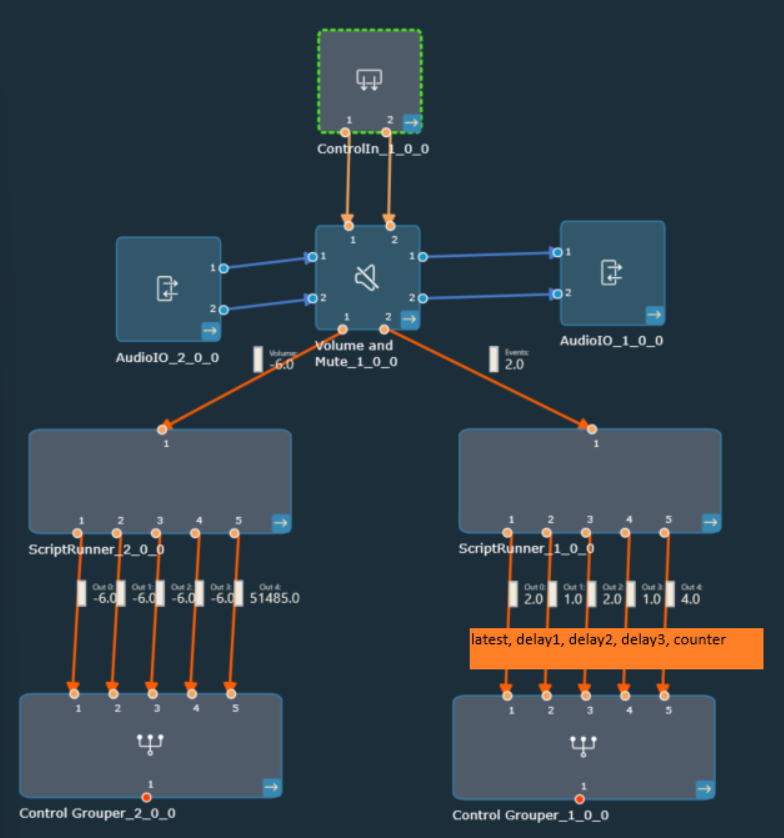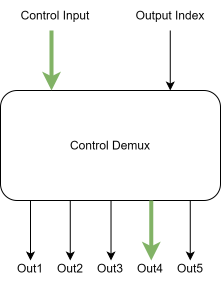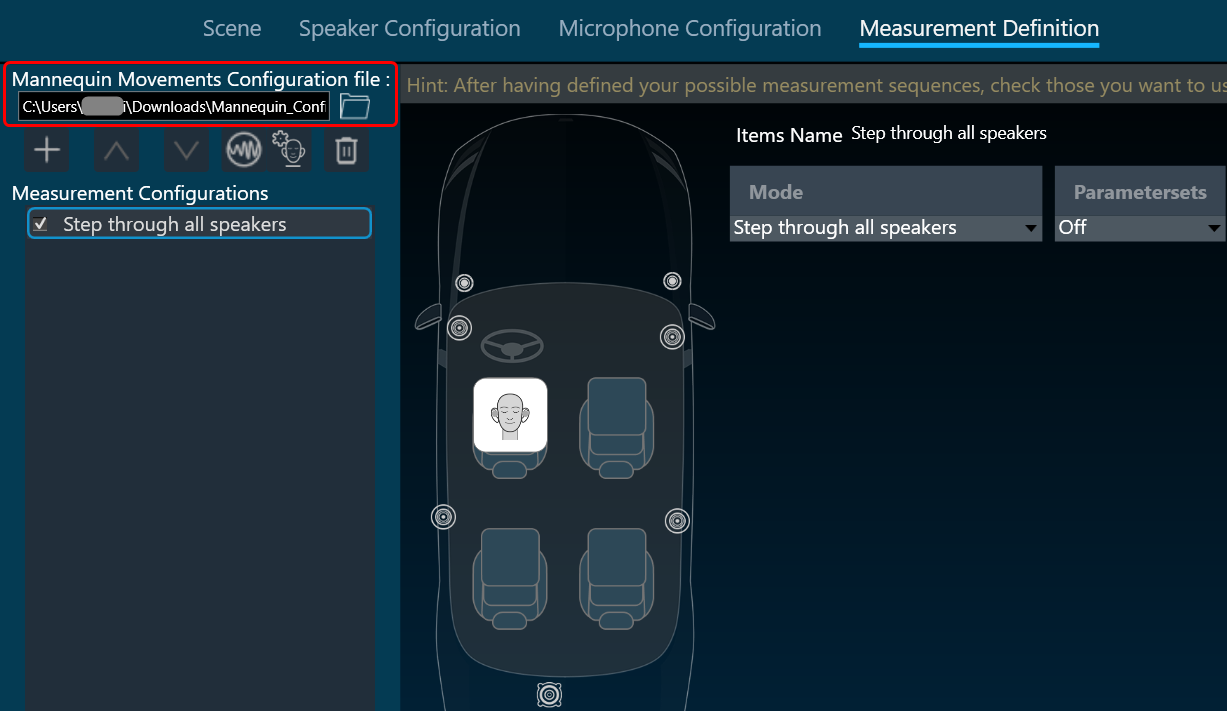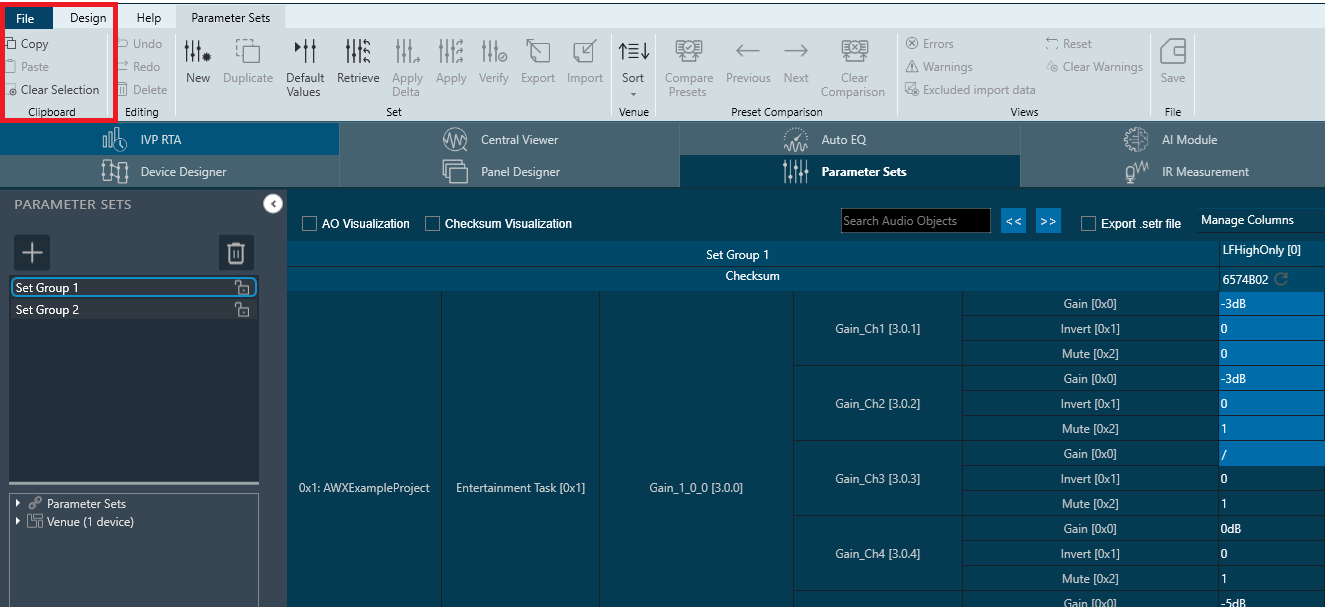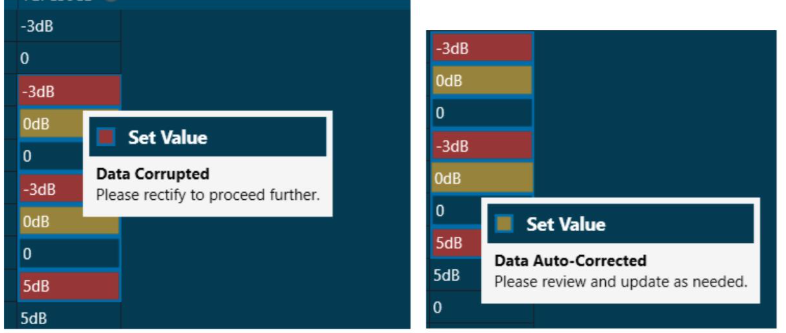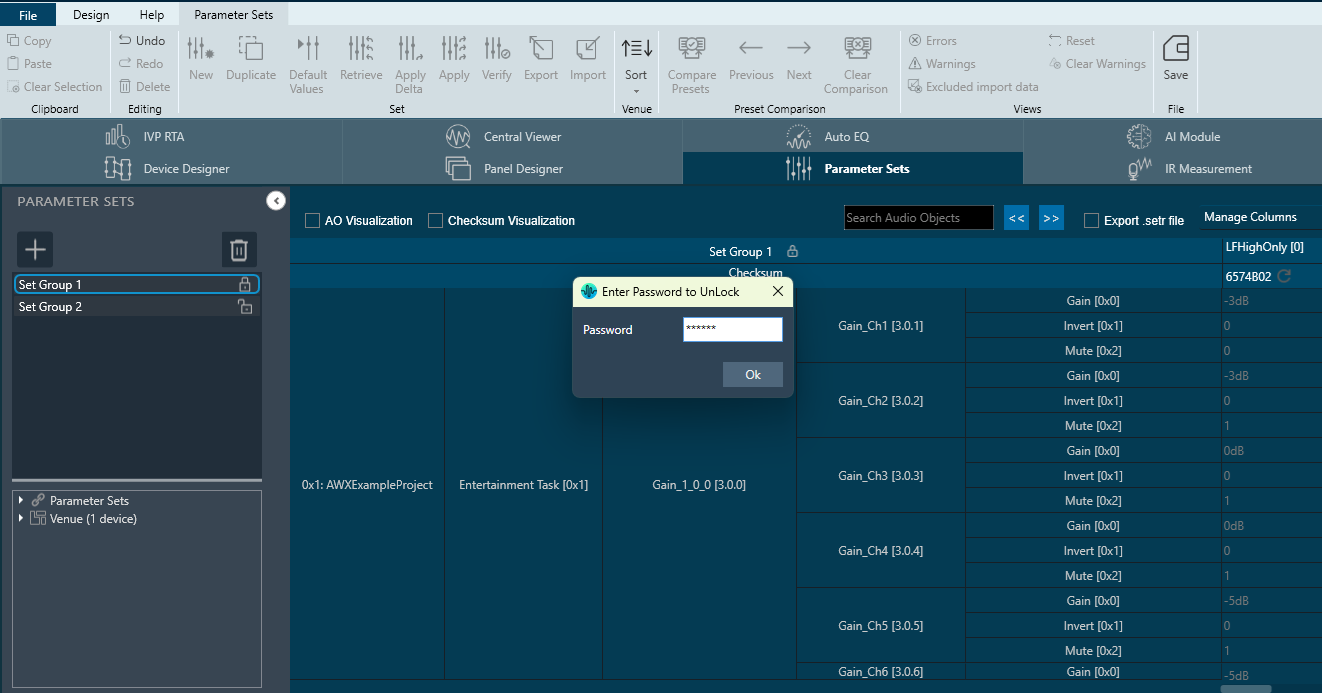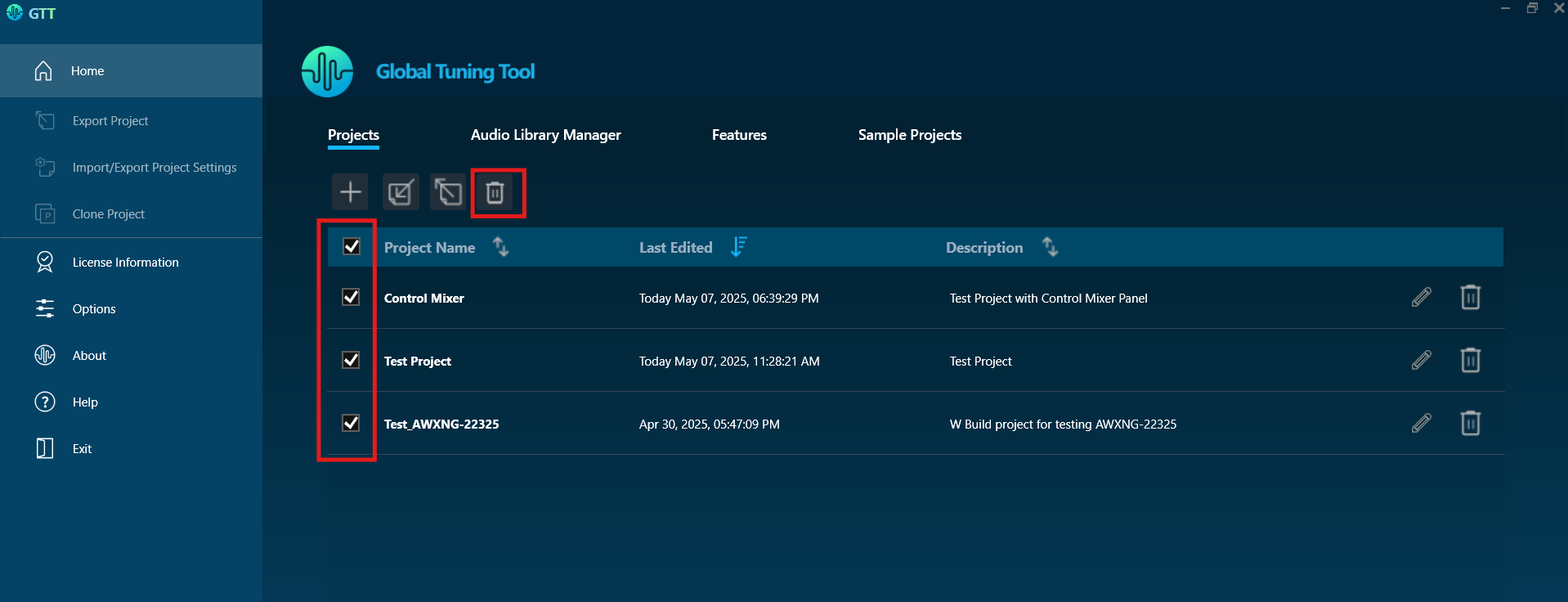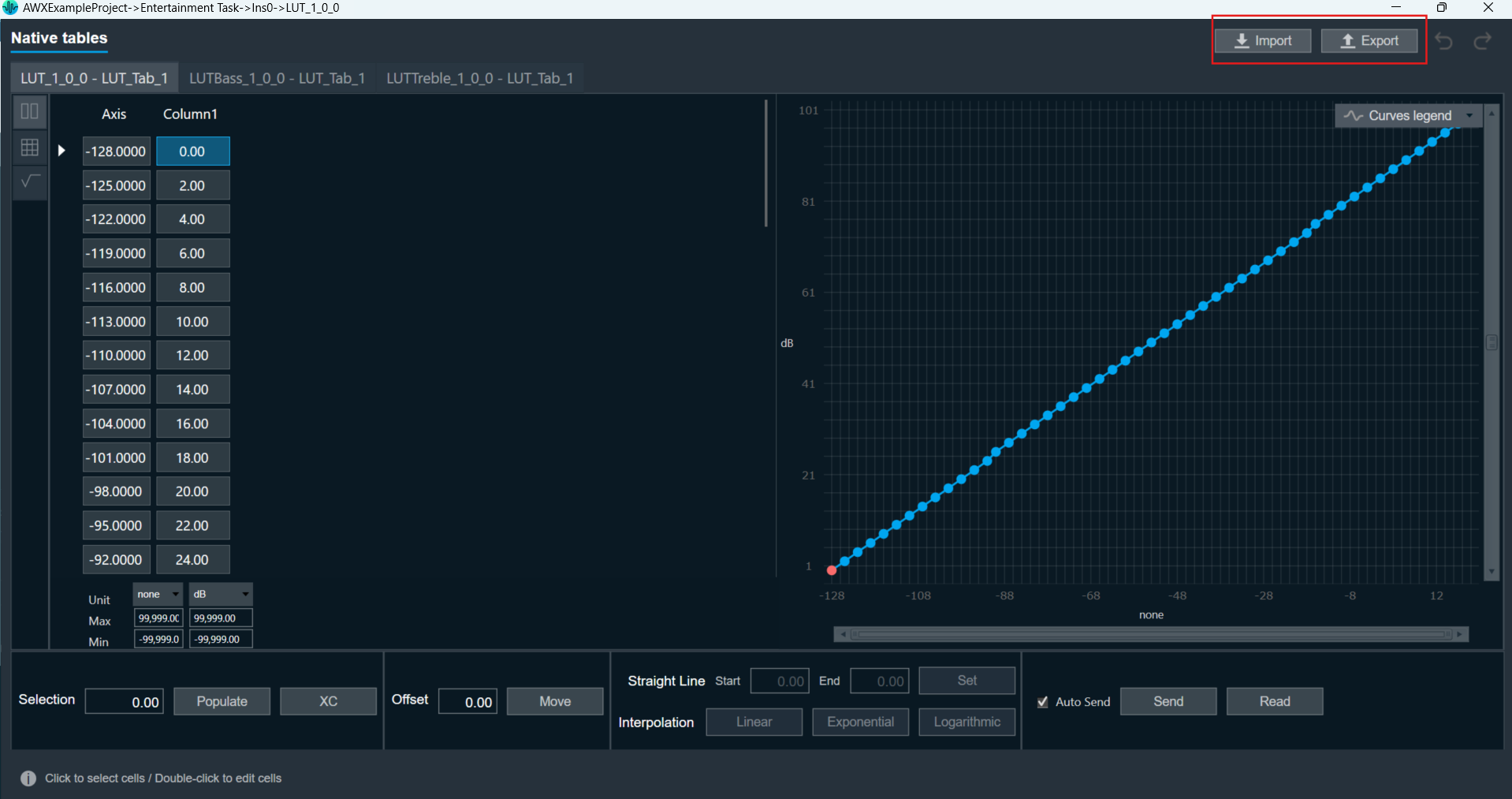The table below outlines the updates for xAF features.
| Features | Updates |
| Script Runner | This new Audio/Control Object enables the user to run it based on one or many user-defined scripts, which are translated into runtime code. Y-Release version is restricted to control signal processing and will be extended to audio, block control, streaming etc. in future releases.
Example: Store the last 4 received control values and the controlSet counter and make those values available via SFD metering. Key Features
|
| Cerence™ Object(s) integration | The SSE audio algorithm from Cerence was integrated
Key Features
|
| File Player | Change requests from HALO and improvements, and optimizations
Key Features
|
| Wave Generator | Extended frequency range (sample rate /2) |
| LUT | A new mode has been added to support exact match. This mode operates without interpolation and triggers only when it receives an exact matching input. It will output the corresponding value from the LUT table. |
| Average Meter | New audio object added to the default AWX audio objects catalogue. This object can calculate average values per channel for a given time frame. |
| Gain Example | A new simplified example audio object is available for reference integrations of third parties. It exposes and showcases only the mandatory API’s and reduces complexity compared to the complete and more detailed AWXExampleObj example. |
| Control Demux | The Control Demux audio object is designed to route the input control signal to one of the outputs based on the index value. It supports all block lengths and all sample rates supported by the framework. Control Demux also has support for SFD metering.
Key Features
|
| Biquad | Parameter-, Coefficient-, Xover-Biquads, and Tone Control Extended were updated to use DFII-T as the default topology.
This does not change existing projects. |
| Volume & Mute | This feature extended the existing Volume and Mute audio object to support event reporting via control. This enables the user to receive muted or ramping completed events in the “handleControlOut” callback or by any other processing audio object.
Key Features
|
If you want to learn more about “Script Runner,” “Cerence™ Objects,” and “Average Meter,” contact our AudioworX support team for further details. You can reach us at AudioworXSupport@harman.com.




